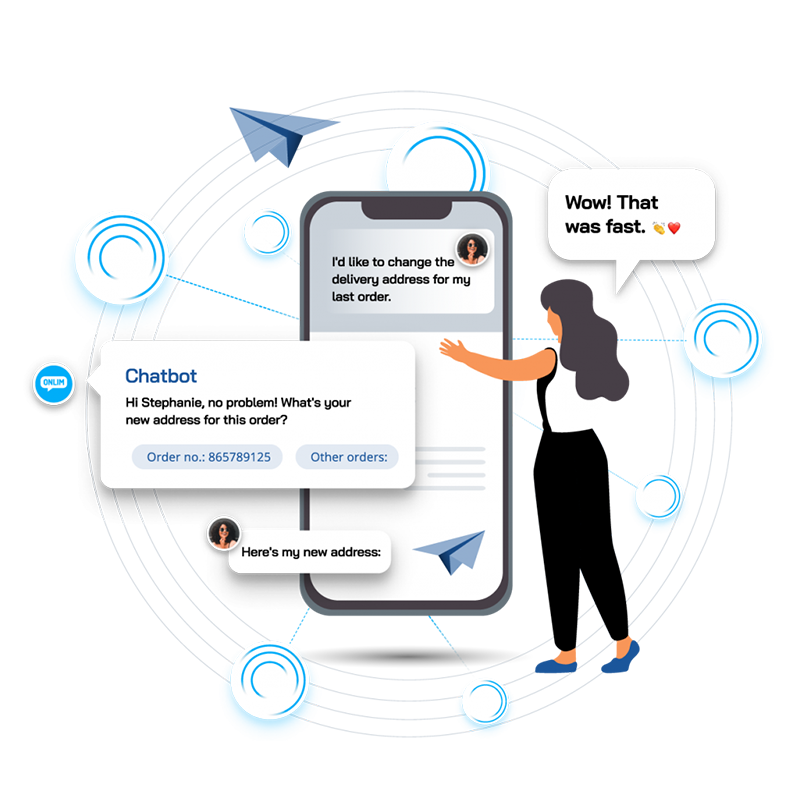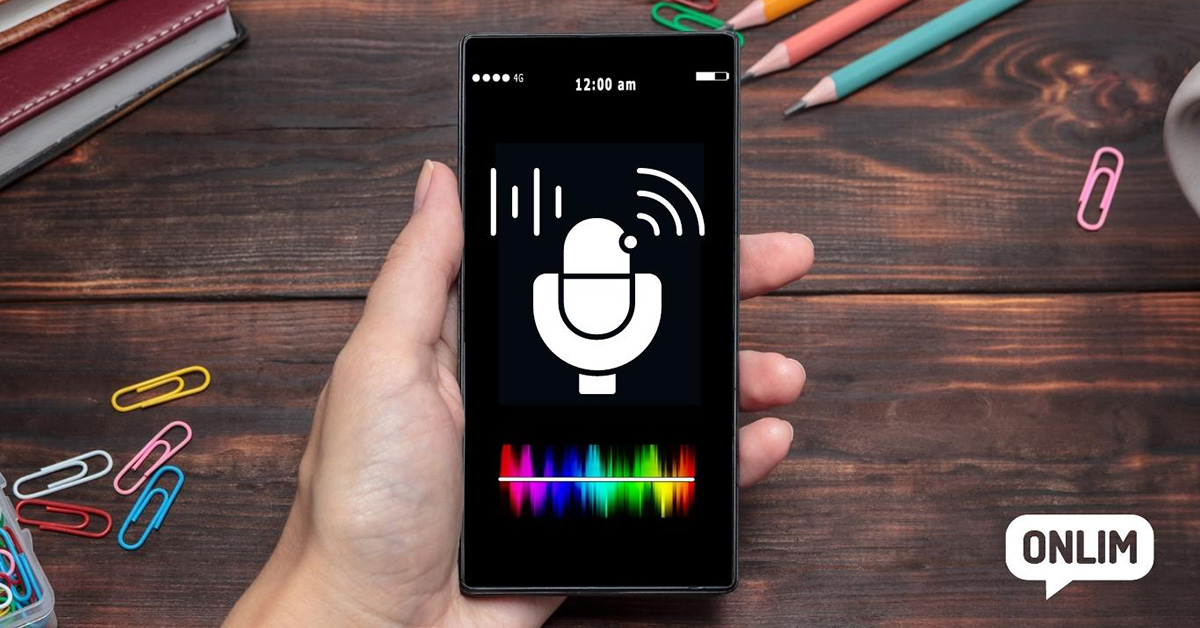How Do Chatbots Work?
Last updated on March 02, 2022
What are chatbots and how do they actually work? Artificial intelligence (AI) has reached a stage where humans can effortlessly interact with automated systems or conversational interfaces such as chatbots or voice assistants. MarketsandMarkets Research estimates that the global Conversational AI market will grow from USD 6.8 billion in 2021 to USD 18.4 billion in 2026. This would represent a compound annual growth rate (CAGR) of 21.8%. Chatbot usage also grew by 67% between 2018 and 2020.
The hype around chatbots took off in 2016 when messaging apps counted more active monthly users than social networks for the first time.
Today, chatbots play an enormous role in business automation processes.
If you have missed the boat so far and still want to jump on, you first need to understand what chatbots are and how they work. Also, like many of our customers, you probably have some questions about chatbot implementation, technology, etc., which we will also address.
Onlim has been active in the chatbot industry since 2016 and has meanwhile implemented several hundred successful chatbot projects for medium-sized as well as large companies from various industries. We are happy to share our experiences with you in this article.
A quick reminder of what chatbots are
Chatbots are a form of automated service. A robot, so to speak, with which customers can communicate via a chat. They are built on artificial intelligence (AI) that works through a set of defined rules and parameters. You can use a chatbot in different ways via text and speech. For example, Onlim chatbots can be used on websites, Facebook Messenger in custom apps or through a voice assistant such as Amazon Alexa, Google Assistant or phone systems.
Basically, you have a virtual conversation with a robot that can perform certain tasks for you or answer your questions.
So how do chatbots work?
A chatbot works in much the same way as a human manning a help desk. When a customer opens a chat dialogue to ask for assistance, the bot is the medium responding.
So, if a customer typed the question ‘What time does your store open tomorrow morning’, using the information available, the chatbot would immediately respond in the same way as a human would. ‘Our store opens at 9am tomorrow morning and closes at 5pm’.
Meanwhile, chatbots can also answer complex queries like:
- “My printer is not working. I get error message 505, what can I do?”
- “I’m looking for a room for 2 adults on Easter weekend in Neusiedl and would like to bring my dog.”
- “How much is the day ski pass for adults with a child?”
- “I’m looking for a blue carbon mountain bike for less than €3,000 for ladies.”
Have you ever asked Siri or Alexa for a weather update in your area? This is also a chatbot and, using your location, a response can be given, in natural, conversational replies.

What is going on behind a chatbot front end?
To answer this question we must understand that there are two types of chatbot.
As we mentioned above, all chatbots are a form of AI, and all of them are supported by complex programming. However they fall into two categories.
The way they are split depends on whether the dominant feature is hardcoded questions/answer or the AI.
Bots that function on structured questions and answers are less complex and bots that function on machine learning harness the full power of AI. From the front end they both look similar and as a user, you may not be able to distinguish the difference.
Scripted and structured
A chatbot working on hardcoded questions/answers has a smaller knowledge base and skill set, and can only provide the correct output to specific instructions.
This means our questions must fit with the programming they have been given. Using our weather bot as an example once more, the question ‘Will it rain tomorrow’ could be answered easily. However if the programming is not there, the question ‘Will I need a brolly tomorrow’ may cause the chatbot to respond with a ‘I am sorry, I didn’t understand the question’ type response.
This bot can only be as smart as the programming it has been given.
If you can only interact with the chatbot via buttons or a given menu or struggle being understood, you might be talking to one with structured questions and answers.
Scripted bots are often used on Messenger platforms. Mostly for marketing purposes as users don’t necessarily need to interact a lot with the bot. They are great to send newsletters or daily content pieces, generate leads, engage users, do surveys etc.
NLP Based Chatbots
If you are looking into implementing a customer service bot for your business, this type of chatbot is the right one.
They can understand language meaning the commands you give do not need to be so specific.
An AI chatbot will figure out that umbrellas and brollys refer to rain, and therefore a deviation from the standard question will not phase them.
The part that makes them understand language, is the natural language processing (NLP). NLP is part of machine learning and artificial intelligence. We don’t want to go into too much technical detail here, but basically NLP consists of three concepts : intent, entity and utterance.
Intents and entities help structure the AI agent, while utterance allows to train and improve it. Essentially, machine learning bots get cleverer the more they are interacted with.
Obviously, the amount of work behind the scenes is much greater.
How can chatbots have better conversations?
Two very important factors for the overall performance of a chatbot are the structure and quality of the data that are available for answering questions. This is where Knowledge Graphs come in.
Knowledge Graph is a synonym for a special kind of knowledge representation. It stores facts in the form of edges between nodes in a graph. In addition, most knowledge graphs also store the schema of the data. Knowledge Graphs develop their full potential, especially with large and complex data structures.
When used for chatbots, a Knowledge Graph offers two direct advantages – improved data integration and simultaneous improvement of conversations.
New data sources can be integrated more easily since they only have to be brought to a single specific format and scheme. Knowledge Graphs also offer increased flexibility for expanding existing knowledge. That way, new facts are saved directly as new nodes and edges in the graph.
It is also possible to link several Knowledge Graphs without any problems, either using the same nodes or adding new edges. This allows to build up a modernly managed corporate knowledge base, which can be retrieved via API and voice interfaces using natural language.
Learn more about using Knowledge Graphs for chatbots here.
How do you know if a chatbot is right for your business?
Chatbots are suitable for many industries and use cases. They are well-known to be able to provide excellent customer service, but there are also some great examples of chatbots in marketing & sales.
Ask yourself these questions before implementing a chatbot:
- How often does your company have direct customer contact?
- Does your customer service receive recurring requests frequently?
- How intensive are your customer requests?
- Which communication channels do your customers prefer?
- What added value can a chatbot create for your business?
How much does a Chatbot cost?
Unfortunately, this question is not as easy to answer as “How much is a can of soda?”.
The investment that you put into a chatbot depends on various factors. Things such as the complexity of the bot, its AI capabilities, how it is built, technical integrations, infrastructure, launch & post-launch support and more have to be considered when you calculate or compare the cost of a chatbot.
While you can sometimes get started for free with very basic bot builders, for bots built with more advanced bot builders you often pay setup fees that can range anywhere from € 1000 to € 15000+ and monthly retainers between € 100 to € 5000+.
We are happy to inform you about our products and prices on request.
How does the implementation process of a chatbot look like?
Again this depends on the type of chatbot and bot builder or service provider that you chose for your technical implementation.
At Onlim, we define and implement individual content together with customers as well as any necessary interfaces to data sources. Moreover, preconfigured modules s are available through our Conversational AI platform. After the technical setup is done, thorough tests and optimizations are done before the chatbot is set live. Customers can then manage any chatbot content, analytics and more through our SaaS platform.
How long does the implementation of a chatbot take?
Our current record is 3 weeks until going live. On average, we expect a lead time of 6-10 weeks after the formal order.
Have you checked out our Ultimate Chatbot Guide For Businesses yet?
What’s next?
If your business is ready to join the intelligent chatbot revolution, arrange a consultation with Onlim.
As experts in Conversational AI, we offer intelligent chatbot and voice assistant solutions that are based on state-of-the-art Natural Language Processing (NLP) and Knowledge Graph technology, include standardised data and interface connections, can be installed on websites, apps, messengers, phone systems, Google Assistant or Amazon Alexa, and are easy to use and manage without programming knowledge.
To begin with, we can, of course, also help you to identify the best use cases for chatbots in your business.
Tipps zur Erstellung eines effektiven Chatbot-Designs
March 2nd, 2022|


